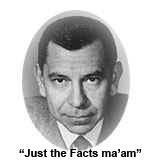 Do you teach learners how to handle errors?
Do you teach learners how to handle errors?
With Terry McGinn
Training programs usually teach “the right way” to do something, supplying learners with perfect answers, procedures, methods, policies, information, and so on. That’s good, but as you probably have noticed in your operations or studies every day, it isn’t enough. How often have you heard an employee implementing a “work around” that makes you want to smack your palm to your forehead after all the routing and requested changes (e.g. “You did WHAT in a sterile area?”)
The right way to do things works as long as everything goes according to plan. As we have all learned, nothing always goes according to plan. Every once in a while, you’ll encounter a deviation (and that’s okay). And when you do, what you do is critical. It can be the difference between averting a disaster and creating an issue that won’t pass regulatory scrutiny.
So, while the average training program teaches employees how to do it the right way, a full education teaches your employees how to do it right way and gives them the capacity to think through things that don’t go as planned. Comprehensive SOP training teaches investigational processes as well as correct document procedures to ensure the quality standards for your products are met and the results are recorded for investigational purposes, when necessary. After all, teaching requires building competencies.
But do we teach people how to take the right actions, make better decisions, choose wisely, and handle deviations? Most of the time, the answer is no. The severe impact of mishandled opportunities to make good, independent decisions can result in slow, no or poor actions, errors in judgment, and impulsive or risky decisions. And any of those things can hit your organization’s bottom line or reputation in fines, product recalls, regulatory rejection and more.
Interested in hearing more? Join us for a one-hour primer on applying critical thinking skills in an SOP environment and find out:
- Why you need to teach learners more than just the “right ways of doing things”
- Why workers and learners need to learn beyond the “what” to the “why”?
- What are Critical Thinking Skills and how do adult learners absorb information?
- Why do Critical Thinkers always learn new things while at work?
- How is Critical Thinking applied in errors or unfamiliar situations?
- How can we set up a culture of Critical Thinkers?
Join us for our free webinar “The Process of Critical Thinking About Your Standard Operating Procedures” and learn how to apply critical thinking skills in SOP situations.
Click on this link to register for the webinar hosted by Levy & Levy Enterprises with your presenters Terry McGinn and Peggy Salvatore on Friday, May 18 at 10 a.m. Eastern. And bring your questions. We look forward to meeting you there.
Photo by chuttersnap on Unsplash










